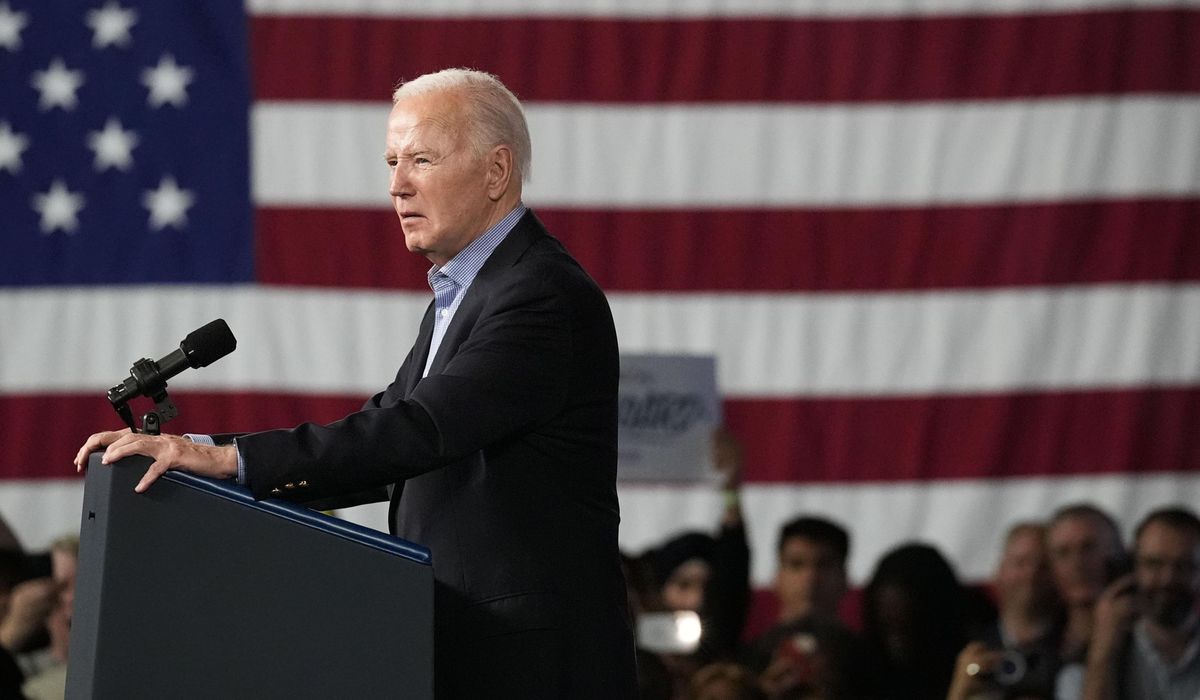


President Biden on Monday released his 2025 budget proposal asking for an eye-popping $7.3 trillion in government spending, but he pledged to reduce the debt by convincing Congress to soak the rich and corporations with massive tax increases.
The president’s budget calls for reducing the deficit while also spending roughly $3 trillion on new policy initiatives paid for with more than $5.4 trillion in new revenue raised through hefty tax hikes on billionaires and large corporations and lower government spending on prescription drugs.
Still, the blueprint envisions a massive increase in the role of the federal government, shooting for about $10.3 trillion in annual spending by 2033, up from current spending totals of $6.3 trillion.
Mr. Biden, in his budget message to Congress, said he helped manage the country through the end of the pandemic and now it’s time for the government to move from crisis containment to active investment.
“We are the only nation that has emerged from every crisis we have entered stronger than we went in,” the president said. “While my Administration has seen great progress since day one, there is still work to do. My Budget will help make that promise real.”
As an actual blueprint for government spending, Mr. Biden’s budget is close to meaningless. It’s weeks late, and it will have little effect on Congress, the branch of government that has primary control over spending.
Indeed, the GOP-led House’s Budget Committee has already written and passed a budget for fiscal year 2025, envisioning significant spending cuts and none of the tax increases Mr. Biden wants to see. Republicans call for total spending of $6.5 trillion and $5 trillion in revenue, leaving a deficit of $1.5 trillion for next year.
That’s roughly $500 billion less in taxes and $800 billion less in spending than Mr. Biden’s plan.
Over the coming decade, Republicans say their budget would reduce deficits each year, most of that by limiting the growth of Medicare and Medicaid spending, finally resulting in an annual surplus in 2034.
Given the party split between the House and Senate, it’s unfathomable that Congress agrees on a full budget. The more likely outcome is the two sides agree on overall spending levels and then leave it to the spending committees to divvy the money up.
Shalanda Young, the White House Office of Management and Budget director, told reporters that the Republican plan is too vague to be taken seriously.
“They don’t tell you what they want to cut, who they harm,” she said. “Congressional Republicans gave us a top line that has rosy projections.”
Mr. Biden’s budget aims to reduce the deficit by $3 trillion over the next 10 years, largely by imposing a minimum 25% tax rate on the unrealized income of very wealthy households and raising the corporate tax code.
He is also calling for a 28% corporate tax hike by reversing former President Trump’s 2017 tax cuts, an idea he floated during last week’s State of the Union speech.
The budget would revive many of the spending plans Mr. Biden unveiled at the outset of his administration, but scaled back because of opposition in Congress. That includes trillions in new spending on programs such as child care, college costs, and public housing.
Mr. Biden is asking for $12 billion to create a fund aimed at lowering the cost of college for students, and more than $30 billion the administration says will lower the cost of housing.
• Stephen Dinan can be reached at sdinan@washingtontimes.com.
• Jeff Mordock can be reached at jmordock@washingtontimes.com.
